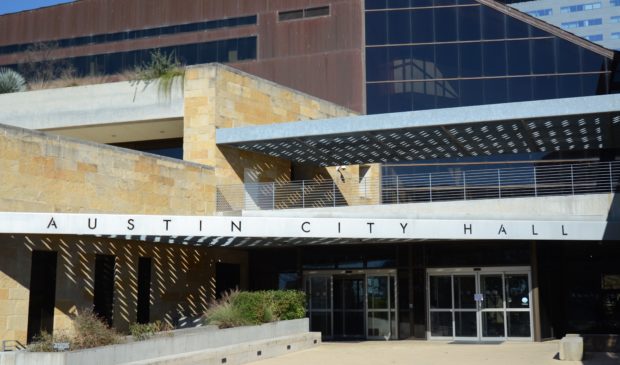Minimum lot sizes: A roadblock for affordable housing?
Friday, November 16, 2018 by
Jack Craver Last week, Austin voters approved a record-busting $250 million for affordable housing, but a discussion during Thursday’s City Council meeting showed that building new housing isn’t simply a matter of having enough money.
At issue is a small piece of vacant land that the city owns at 3000 Funston St., just east of MoPac Expressway in the Bryker Woods neighborhood.
“We purchased the property back in 1970 as part of a MoPac expansion project– our files don’t actually talk about what the exact use of the property was for but that it was purchased with street and bridge funds for the purpose of the expansion project,” explained Alex Gale of the city real estate office, in an email to the Austin Monitor.
On Thursday, Council was asked to approve the transfer of the 4,250-square-foot lot to the Austin Housing Finance Corporation for the purpose of developing it into affordable housing.
The problem, from the perspective of some Council members, is that the only kind of housing the city is allowed to build on the lot is a single-family home. Not only is the parcel currently zoned for single-family, but there is no zoning category available under the city code that would allow the parcel to accommodate more than one unit, explained Planning and Zoning Director Greg Guernsey. The minimum lot size for a structure with multiple units is 5,750 square feet.
“Our self-imposed code is the only restriction that prevents us from exploring two or three units?” Council Member Jimmy Flannigan asked. Staff confirmed that was indeed the case.
Earlier this year, when Council was discussing how large a housing bond it should propose to voters, Flannigan said that he was reluctant to approve a major bond measure if it was not coupled with land use reforms that would “legalize” the kinds of development necessary to house the greatest number of people.
Flannigan and others were counting on CodeNEXT, the long-running attempt to overhaul the land development code, to provide those necessary reforms. However, in response to vociferous opposition from neighborhood associations and an organized campaign to defeat the proposal, Council voted unanimously in August to scrap the project.
However, even the proposed reforms in CodeNEXT would not have allowed for multiple units on such a small lot. The last draft would have allowed two units on a 5,000-square-foot lot.
At the very least, said Council Member Greg Casar, the city code should not prohibit the city from developing affordable housing on its own land.
“That seems like we don’t have enough tools,” he said.
After squashing CodeNEXT, Council instructed City Manager Spencer Cronk to craft proposed changes to the land development code. It is not yet clear when Cronk will do that or what the proposed changes will look like.
Those on Council who favor changes to the code to allow more density feel emboldened to push for major reforms in the wake of last week’s election results. Mayor Steve Adler’s chief opponent, Laura Morrison, ran a campaign largely based on opposition to CodeNEXT but ended up with just under 20 percent of the vote. Proposition J, the referendum prompted by anti-CodeNEXT activists that would have required any major code changes to be approved by voters, also narrowly failed.
Furthermore, Council is losing one of its density critics, Council Member Ora Houston. Houston will be replaced either by Natasha Harper-Madison or Mariana Salazar, who are facing off in a runoff election next month. Both candidates support changing the code to increase housing supply.
“We’re going to have a very big conversation in this community about what we can and cannot build,” said Flannigan.
City staff emphasized that if the code changes anytime soon, the lot in Bryker Woods could be home to more units. By voting to transfer the property, Council was not committing the lot to becoming a single-family home, assured Mandy De Mayo, an administrator in the Neighborhood Housing and Community Development Department.
As for spending affordable housing funds, said De Mayo, “It will be a strategy to maximize the number of units on any site.”
Council unanimously approved the transfer of property.
Photo by John Flynn.
The Austin Monitor’s work is made possible by donations from the community. Though our reporting covers donors from time to time, we are careful to keep business and editorial efforts separate while maintaining transparency. A complete list of donors is available here, and our code of ethics is explained here.
You're a community leader
And we’re honored you look to us for serious, in-depth news. You know a strong community needs local and dedicated watchdog reporting. We’re here for you and that won’t change. Now will you take the powerful next step and support our nonprofit news organization?











